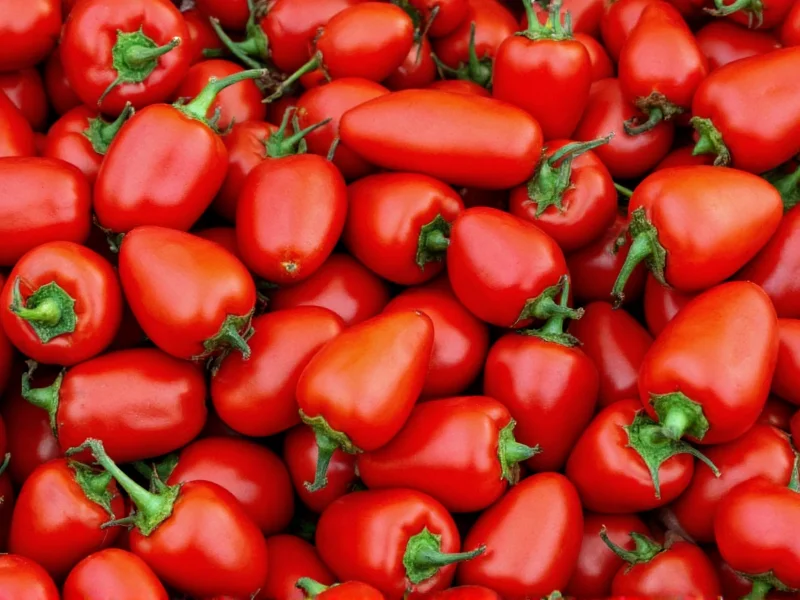Paprika's journey from New World discovery to global kitchen staple represents one of history's most fascinating culinary migrations. While modern consumers often associate this vibrant red spice with Hungarian goulash and Spanish chorizo, its true origins trace back thousands of years to Mesoamerican civilizations that first domesticated chili peppers.
Historical Origins of Paprika
Archaeological evidence shows chili peppers were cultivated in Central Mexico as early as 5,000 BCE. Indigenous peoples like the Aztecs and Mayans used these peppers both as food and in religious ceremonies. When Spanish explorers arrived in the Americas during the Columbian Exchange, they discovered these vibrant red peppers and transported them back to Europe. Initially grown as ornamental plants, chili peppers gradually entered European cuisine through trade routes.
Hungarian cultivation of paprika began in the 16th century after the Ottoman Empire introduced peppers to the region. By the 19th century, Hungarian farmers had developed specialized varieties that produced the deep red, flavorful spice now synonymous with Hungarian cuisine. The town of Kalocsa became particularly renowned for its paprika production, establishing methods that remain influential today.
Botanical Source and Production Process
All paprika comes from Capsicum annuum peppers, the same species that produces bell peppers and many chili varieties. The specific cultivars used for paprika contain lower capsaicin levels than hot chili peppers, resulting in milder flavor profiles. Paprika production involves several critical steps:
| Production Stage | Key Details |
|---|---|
| Harvesting | Peppers picked at peak ripeness when color and flavor compounds are most developed |
| Drying | Traditional sun-drying versus modern controlled methods affecting flavor complexity |
| Processing | Seeds and placenta removed before grinding to control heat level |
| Grinding | Stone grinding preserves flavor compounds better than high-speed industrial methods |
Regional Varieties and Their Characteristics
Different growing regions produce distinctive paprika varieties based on local climate, soil conditions, and processing traditions. Understanding these regional differences helps explain why "where does paprika come from originally" has such varied answers depending on context.
Hungarian paprika represents the gold standard for many chefs, with eight official classifications ranging from mild édesnemes (noble sweet) to fiery erős (hot). The unique flavor profile comes from specific Hungarian cultivars grown in the fertile plains along the Danube River. Spanish paprika (pimentón) often undergoes smoking over oak fires, creating distinctive varieties like pimentón de la Vera. California produces large quantities of paprika with consistent color but less complex flavor than traditional European varieties.
Cultural Significance Across Cuisines
Paprika's integration into regional cuisines demonstrates how a single ingredient can evolve differently across cultures. In Hungary, it's considered a national treasure with protected designation of origin status for certain varieties. Spanish cuisine uses smoked paprika as a fundamental flavor base, while in West Africa, similar pepper powders feature prominently in stews and soups.
The spice's journey from Central American origin to global staple illustrates how food traditions transform through cultural exchange. What began as a local Mexican ingredient became essential to Hungarian identity and Spanish cooking techniques through centuries of adaptation and refinement.
Modern Production and Quality Considerations
Today, paprika production spans multiple continents, but quality varies significantly based on growing conditions and processing methods. Premium paprika maintains strict quality controls throughout the production chain:
- Pepper varieties specifically bred for color intensity and flavor profile
- Traditional sun-drying methods that develop complex flavor compounds
- Stone grinding at controlled temperatures to preserve volatile oils
- Rigorous testing for color strength (measured in ASTA units)
- Protection from moisture and light during storage to maintain freshness
When selecting paprika, understanding its origin provides valuable insight into expected flavor characteristics. Hungarian sweet paprika offers rich, earthy notes perfect for stews, while Spanish smoked paprika adds distinctive depth to grilled meats and bean dishes. Knowing where paprika comes from originally helps cooks choose the right variety for specific culinary applications.
Frequently Asked Questions
What is the original country where paprika comes from?
Paprika's original source is Central Mexico, where indigenous peoples first cultivated the chili peppers that would eventually become paprika. Spanish explorers brought these peppers to Europe in the 16th century, where they were later developed into the spice we know today.
How did paprika become associated with Hungary if it originated in Mexico?
After Spanish explorers introduced chili peppers to Europe, Hungarian farmers began cultivating them in the 16th century following Ottoman influence. By the 19th century, Hungarian growers had developed specialized pepper varieties and production methods that created superior quality paprika, establishing Hungary's reputation for premium spice production.
What's the difference between Hungarian and Spanish paprika?
Hungarian paprika typically features eight flavor classifications from sweet to hot, made from specific Hungarian pepper varieties without smoking. Spanish paprika (pimentón) is often smoked over oak fires, creating distinctive varieties like pimentón de la Vera, with flavor profiles ranging from sweet to hot depending on the region and processing method.
Is all paprika made from the same type of pepper?
Yes, all paprika comes from Capsicum annuum peppers, but different cultivars are used depending on the desired flavor profile. Sweet paprika uses low-capsaicin varieties, while hot paprika comes from spicier cultivars. The specific growing conditions and processing methods create the distinctive characteristics of regional paprikas.
How can I tell where paprika comes from by looking at it?
While visual identification isn't foolproof, Hungarian paprika typically has a vibrant brick-red color with fine texture, Spanish smoked paprika often shows slightly darker, more orange-red tones with possible smoky aroma, and American commercial paprika may appear brighter red but less complex in flavor. The best indicator remains the product labeling specifying origin and variety.











 浙公网安备
33010002000092号
浙公网安备
33010002000092号 浙B2-20120091-4
浙B2-20120091-4